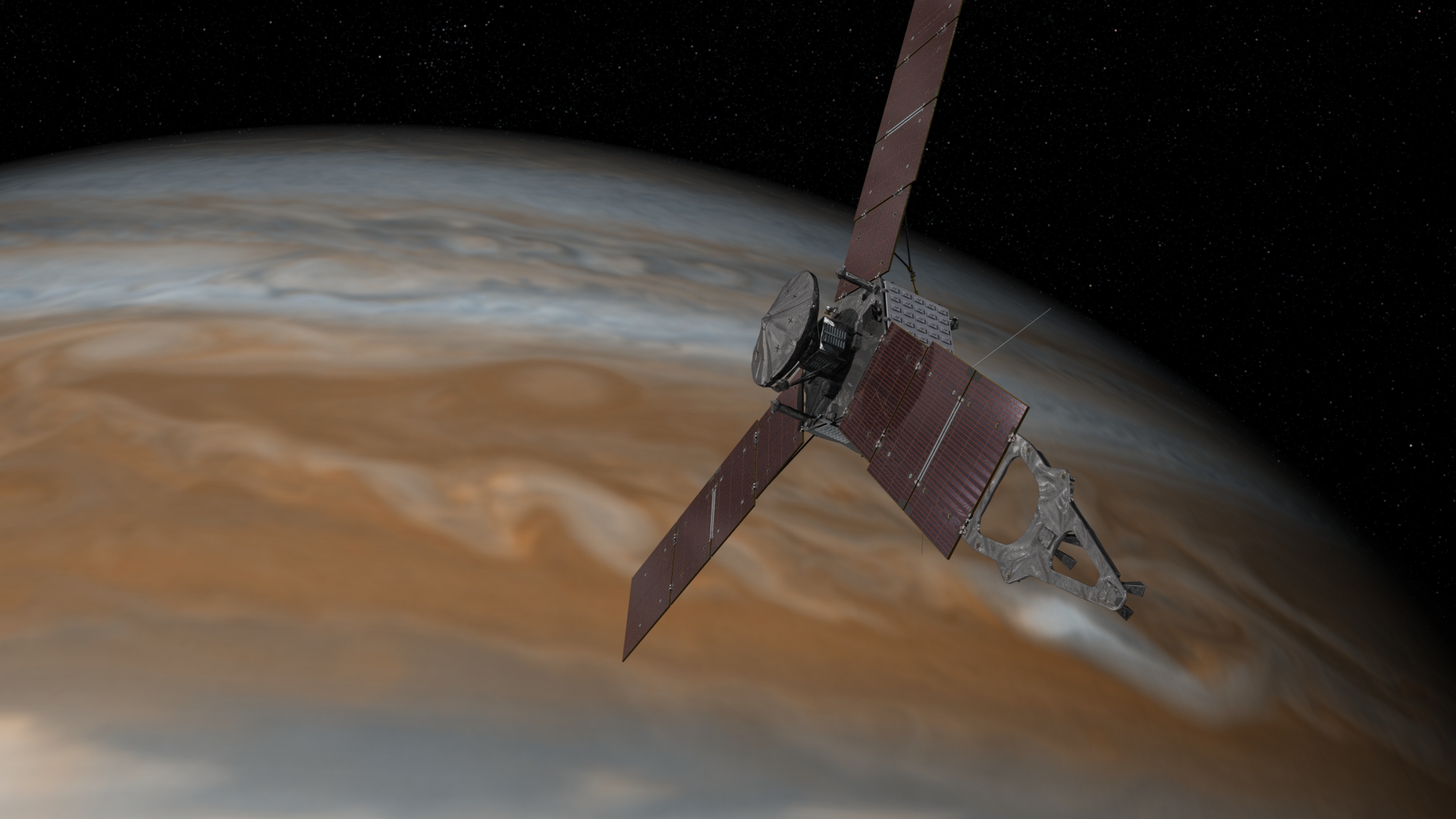Jupiter's Gravity Embraces NASA's Juno Spacecraft

NASA’s Juno spacecraft has entered the home stretch of its five-year journey to Jupiter.
On Friday (May 27), Juno crossed a gravitational boundary between Jupiter and the sun, and the gas giant began pulling the spacecraft in ahead of a planned July 4 arrival, NASA officials said.
"As of tomorrow [May 28], and for the rest of the mission, we project Jupiter's gravity will dominate as the trajectory-perturbing effects by other celestial bodies are reduced to insignificant roles," Juno project manager Rick Nybakken, of NASA's Jet Propulsion Laboratory in Pasadena, California, said in a statement.
Juno launched in August 2011. Since then, three gravitational forces have markedly influenced the spacecraft's trek — those of the sun, the Earth and Jupiter. At the beginning stages of Juno's trip, Earth was most influential; more recently, the sun has had the biggest impact on the spacecraft's trajectory, NASA officials said.
On July 4, the basketball-court-size Juno will fire its main engine for 35 minutes, changing the probe's velocity and allowing it to slide into an elliptical orbit around Jupiter.
Once Juno is in orbit, the spacecraft will fly around Jupiter at least 37 times, coming within just 3,100 miles (5,000 kilometers) of the planet’s cloud tops during its closest approaches.
Juno will study the gas giant's auroras and gather a variety of data that should shed light on Jupiter's formation, structure, atmosphere and magnetosphere, NASA officials have said. Science operations at Jupiter are scheduled to last for at least one year.
Breaking space news, the latest updates on rocket launches, skywatching events and more!
Juno will be the second probe ever to orbit Jupiter, after NASA's Galileo spacecraft, which studied the gas giant up close from 1995 through 2003.
Unlike the nuclear-powered Galileo, Juno uses solar energy and is equipped with the largest solar arrays ever flown on an interplanetary spacecraft. Each of Juno's three solar panels is 8.9 feet wide by 29 feet long (2.7 by 8.9 meters).
Follow Kasandra Brabaw on Twitter @KassieBrabaw. Follow us @Spacedotcom, Facebook and Google+. Originally published on Space.com.

Kasandra Brabaw is a freelance science writer who covers space, health, and psychology. She's been writing for Space.com since 2014, covering NASA events, sci-fi entertainment, and space news. In addition to Space.com, Kasandra has written for Prevention, Women's Health, SELF, and other health publications. She has also worked with academics to edit books written for popular audiences.
